Today started with an excellent meeting with Brian Flannery of Resources for the Future (RFF). After spending most of his career as a scientist at Exxon, he now works to lobby for more business presence and involvement in the UNFCCC negotiations. We learned a lot about the business perspective on the negotiations, and how implementation of NDCs could be improved if businesses were part of the commitment development process.
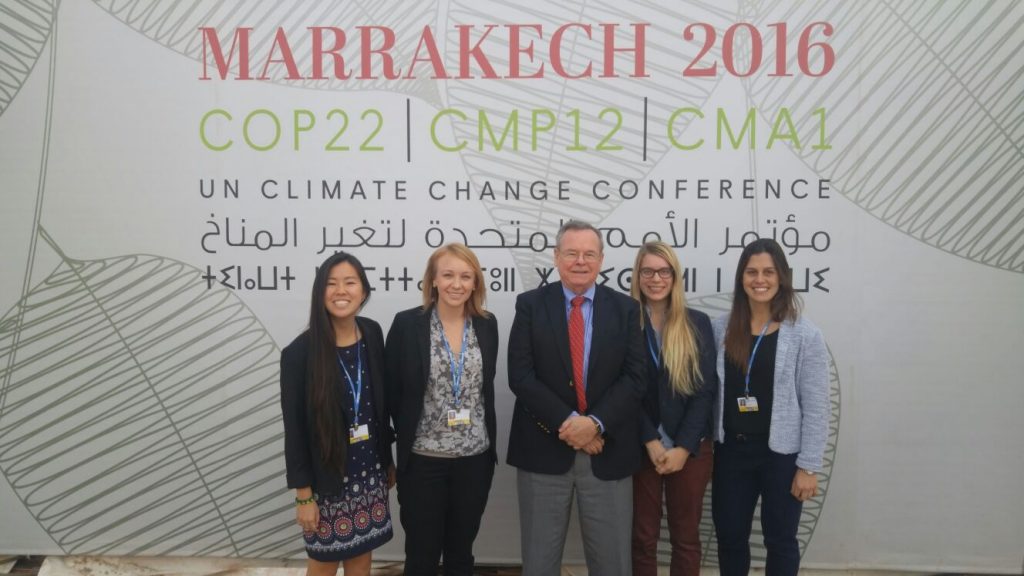
The afternoon consisted mostly of a series of briefings for observer organizations by both the APA co-chairs and the COP President. There was significant pushback on the APA about closing the sessions to all but 2 observer delegates from each constituency, but the co-chairs seemed unwilling to budge on that detail. We also heard messages from the COP president about Morocco’s dedication to energy efficiency, which can be seen through the solar panels that have been installed on many of the mosques around town. We also got to skype with the rest of the class in Durham, who will be arriving in just a few days.
Tanya: The day started off with a meeting with my client IUCN to help them organize logistics for their side event this evening, and coordinating with food vendors to work out the details. I then attended two events on finance – the COP contact groups on the GEF and GCF which briefed the COP on the state of climate finance today. This was followed up with unexpected access to APA consultations on “further matters relating to the implementation of the Paris agreement”.
This was the first time I was able to observe closed proceedings, and the divide between the stances of the US, EU and Australia on the one hand and developing countries representatives couldn’t have been more clear. The issue focused on access to funding under the Adaptation Fund set up in 2001 under Kyoto, and whether those states that are signatories to Paris but not Kyoto would necessarily be excluded. Northern representatives made the important point that the Adaptation Fund mechanism could not be substituted wholesale (from Kyoto to Paris) and that further discussion would be required on the issue, while developing countries reiterated their position that this was a procedural/legal wrinkle that didn’t need much further study since the modalities had been brought up multiple times (even if in different contexts).
After being turned away from a closed APA meeting in the afternoon, I returned to the green zone to view their innovations’ exhibits – the green cars and planes were very cool! I also attended an Adaptation Committee and LEG committee side event on the progress made so far on the Paris mandate. We rounded out the evening by attending the co-chairs and COP president’s briefings to observers on progress made so far, before I got into the thick of helping IUCN set up for their evening event on ecosystem based approaches to adaptation!
Jade: It’s hard to believe only Thursday and that it’s already Thursday. Today was another long but engaging and diverse day – kicking off with a fascinating meeting with Brian Flannery, who shared a big business perspective of the negotiations. He emphasized the necessity of a defined channel for the business sector to give input to the negotiations. My client coalition met to discuss ongoing work on agriculture, with informal consultations occurring throughout the day. Later, I attended some observer briefings to get a big picture overview of what was going on in the negotiations. Perhaps my favorite part of the day was getting a chance to tour the country pavilions – great way to see how countries portray their “personalities” with their pavilions.
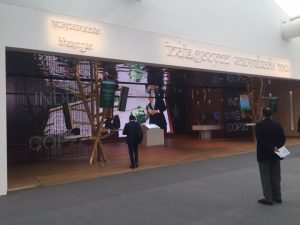
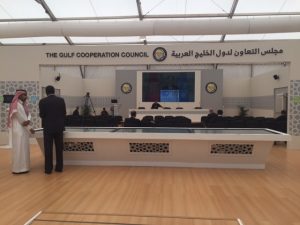
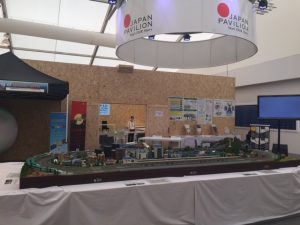
Megan: Already day 4! The morning started off with attending the Climate Analytics daily briefing. Most of their people have been inside the APA and CMA meetings that I cannot get into, so it is interesting to hear what is happening there and what they are taking from it. Following this, we had a lovely meeting with Brian Flannery, former Science, Strategy and Programs Manager at Exxon Mobil and now collaborator with Resources for the Future. Having no business background myself and seeing very little of it in events here, it was great to be exposed to that perspective. Most of my afternoon was spent in various side events related to human mobility, cultural heritage and climate change. Studying oceans and being very aware that people from small island developing states and coastal areas are being displaced by rising sea levels, storm surges, salt water intrusion, flooding, etc., it was a surprise to learn that one of the largest groups of people displaced by climate change are actually farmers. Next, I headed over to the Nordic Pavilion for a press conference with WWF on banning heavy fuel oil in the Arctic, where I met Lars-Otto Reiersen, executive secretary of AMAP (one of the six working groups if the Arctic Council), which was really awesome even though our chat was brief. He is the first Arctic focused person I have met at COP 22. On the way over to skype with class I ran into this strange but joyous shark at the Malaysia both (insert pic)and caught the sun setting over the tents with the Jurassic Park theme playing in the background, so a quirky end to the day.
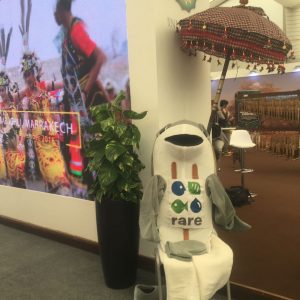
Delfina: This morning we met with Brian Flannery from RFF. After the meeting, I spend half the day in the AILAC office, where I got to interview negotiators from Paraguay, Guatemala and Costa Rica. Additionally, I got the chance to speak with Guatemala’s Vice Minister of Resource Management and Climate Change for an extended period of time. The interview mainly focused on the main challenges that Guatemala faces in terms of climate change and how they plan to interfere in this COP in order to counter these effects.
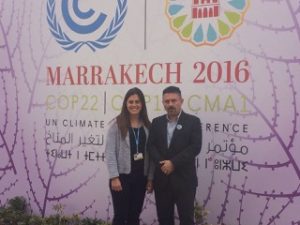
Fernando Coronado Castillo, Vice Minister of Natural Resources and Climate Change for Guatemala
After, I attended the SBA meeting for a while and then met with a member of the Peruvian delegation where we spoke about the future of Peru’s NDCs, the ambition of the commitment and its future development and influence in Peru’s economy, governance and policy environment.